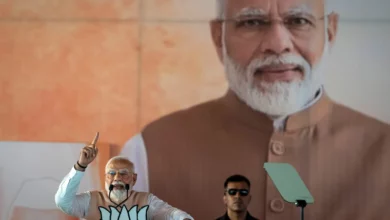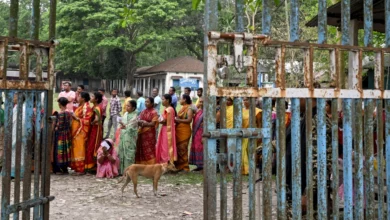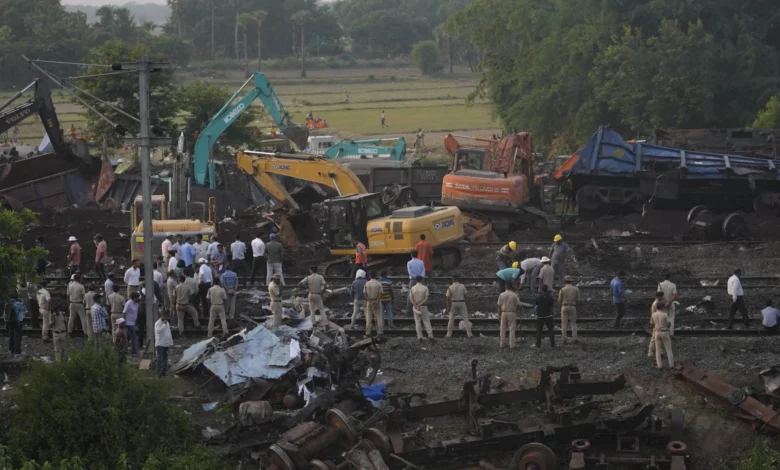
At least 275 people were killed and more than 1,000 injured in what officials have described as a three-way crash involving two passenger trains and a stationary freight train on Friday evening. The toll was revised down from at least 288 after officials said some of the bodies at the scene had been counted twice in the chaos of the wreckage.
Authorities were examining whether a failure in signaling – the result of either a technical malfunction or human error – had led to the crash. India’s railways minister, Ashwini Vaishnaw, said on Sunday that the accident had occurred “due to a change in electronic interlocking” and that an investigation would show “who was responsible for that mistake.”
“The cause has been identified and the people responsible for it have been identified,” he told Indian news agency ANI, declining to give further details until the government report is released.
According to senior railway officials, the Coromandel Express, a high-speed train traveling from Kolkata to Chennai, was diverted onto a loop line and slammed into a heavy goods train idled at a station, Bahanaga Bazar. Its carriages derailed onto the opposite track, where they were hit by an oncoming high speed train, the Howrah Express, which was traveling from Bangalore.
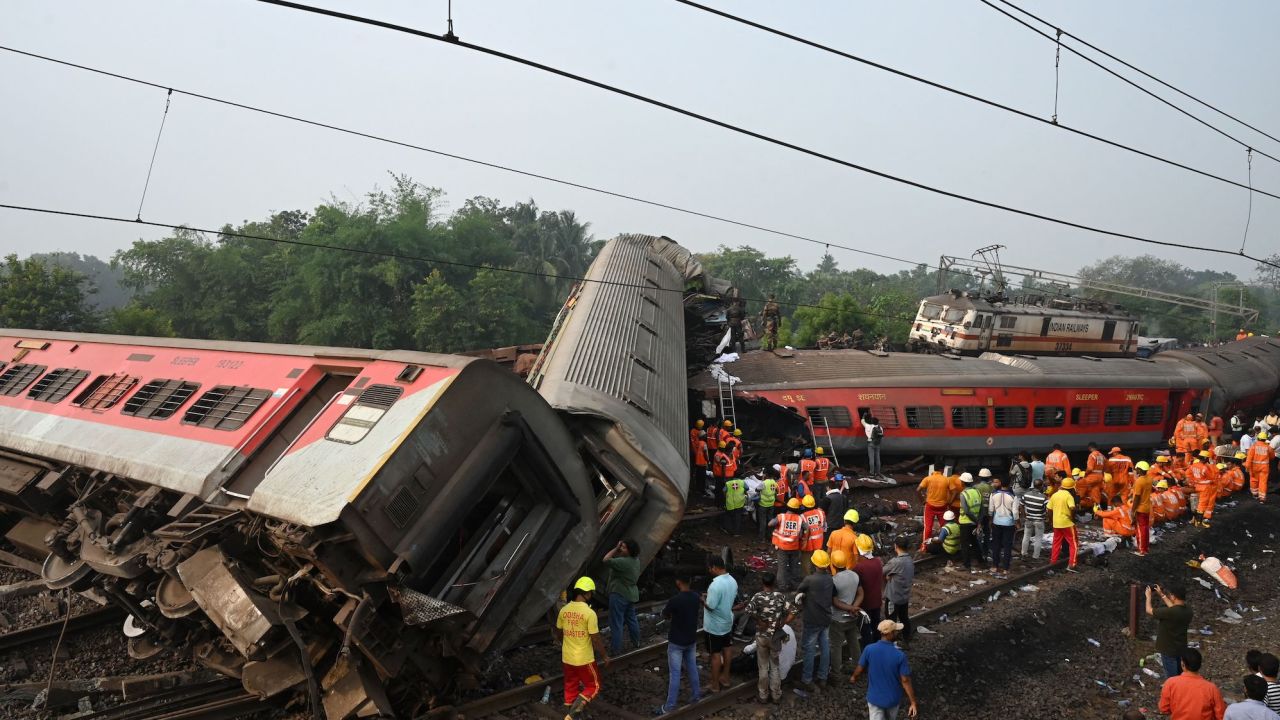
Jaya Varma Sinha, an Indian railways ministry official, said on Sunday that the high speed of the Coromandel Express colliding into the goods train, which was carrying iron ore, had contributed to the huge number of casualties and injuries.
“The impact was high as the train was moving at full speed, 128 kmph [79.5mph], and the other issue here is that it was a goods train carrying iron ore, which is a heavy train so the entire impact of the collision was felt on the moving train,” Sinha said.
She added that the other passenger train was also moving at a very high speed, 126 kmph [78.2mph], and that in the last fraction of a second its last three coaches came into the path of the other derailed coaches.
Anger is growing over the deadly accident, with frustrations over long-running safety issues with India’s aging and outdated rail network boiling over. With the rail routes still blocked, family members of deceased passengers are having to find their way by other means to the crash site, to help identify the dead.
Hopes have faded that any more survivors will be found, with authorities on Sunday switching their focus from searching for people stuck under overturned carriages to clearing the wreckage. All 21 coaches which were derailed at the Bahanaga Bazar station have been moved and the rest of the site is being repaired so that services can start again.
More than 1,000 workers, seven excavating machines, two accident relief trains and four railway and road cranes have been deployed in the recovery efforts at the crash site.
Vaishnaw, who is facing calls from opposition politicians for his resignation, said the aim was to have a “complete, normal-like situation by Wednesday morning,” adding, “we have mobilized lots of resources.”
The number of injured remains at over 1,000 people, and over 100 patients need critical care, according to India’s Health Minister Mansukh Mandaviya, who arrived in Odisha state on Sunday morning.
Expert doctors, specialized equipment, and medication have been flown in from the Indian capital, New Delhi, Mandaviya added.
Odisha’s Chief Minister Naveen Patnaik on Sunday announced 500,000 rupees ($6,067) in compensation for the next of kin of those who died and 100,000 rupees ($1,213) for people who sustained serious injuries.
Patnaik said “all possible steps have been taken to save the lives of injured passengers in different hospitals,” according to a statement issued by Odisha’s Information and Public Relations Department.
The state authorities said a special train service will run on Sunday to transport survivors and dead bodies out of Odisha.
The train will run to Chennai, in southern Tamil Nadu state, and stop at all major stations, with a parcel carriage attached to carry bodies of the deceased.
Indian Prime Minister Narenda Modi, who visited the site on Saturday, hailed local authorities and rescuers for their work, while also reaffirming that those to blame for the accident would be brought to justice.
“I commend each and every person belonging to the teams of railways, NDRF (National Disaster Response Force), ODRAF (Odisha Disaster Rapid Action Force), local authorities, police, fire service, volunteers and others who are working tirelessly on the ground and strengthening the rescue ops. Proud of their dedication,” he said.
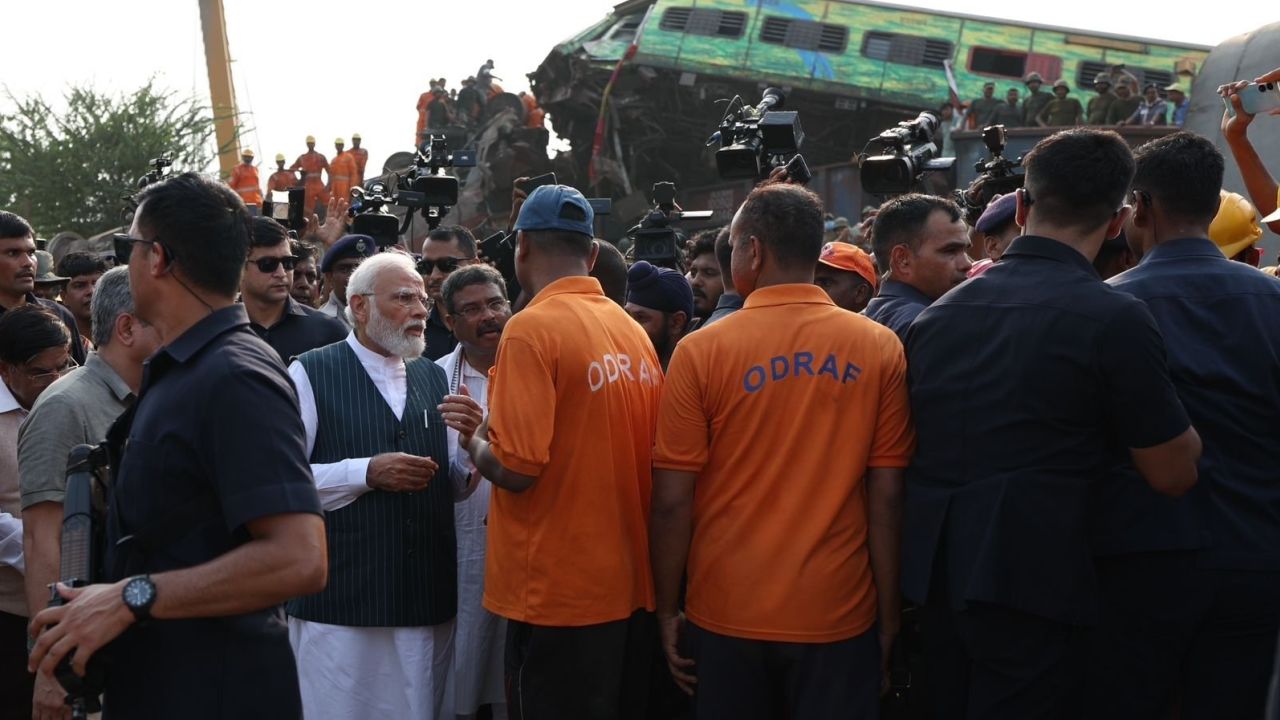
Condolences have poured in over the past two days from world leaders around the globe, including Ukrainian President Volodymyr Zelensky, Russian President Vladimir Putin, US President Joe Biden, British Prime Minister Rishi Sunak and Japanese Prime Minister Fumio Kishida.
United Nations Secretary General, Antonio Guterres, said he was “deeply saddened by the loss of life and injury,” according to his spokesman. A message released by the Vatican said Pope Francis was “deeply saddened to learn of the immense loss of life.”
The train crash has raised questions over the safety of the country’s massive and outdated rail network, as the government invests in its modernization.
India’s extensive rail network, one of the largest in the world, was built more than 160 years ago under British colonial rule. Today, it runs about 11,000 trains every day over 67,000 miles of tracks in the world’s most populous nation.
Decaying infrastructure is often cited as a cause for traffic delays and numerous train accidents in India. Though government statistics show that accidents and derailments have been on the decline in recent years, they are still tragically common.
More than 16,000 people were killed in nearly 18,000 railway accidents across the country in 2021. According to the National Crime Records, most railway accidents – 67.7% – were due to falls from trains and collisions between trains and people on the track. Train-on-train collisions are less common.
Upgrading India’s transportation infrastructure is a key priority for Modi in his push to create a $5 trillion economy by 2025. For the fiscal year that started in April, Modi’s government raised capital spending on airports, road and highway construction and other infrastructure projects to $122 billion, or 1.7% of its GDP.
A significant portion of that spending is targeted at introducing more high-speed trains to its notoriously slow railways. India’s new budget includes a $29 billion allocation for railway development, according to Albright Stonebridge Group, a business-strategy firm.
An ambitious National Rail Plan, announced in 2021, envisages that all major cities in north, west and south India should be connected by high-speed rail. Cities between 300 kilometers and 700 kilometers apart with a population of at least one million are being prioritized.
Several major projects have just finished, or are close to completion, including the construction of the world’s tallest railway bridge in the Jammu and Kashmir region. Modi had been set to inaugurate a new high-speed train, the Vande Bharat Express, on Saturday before the accident happened.

